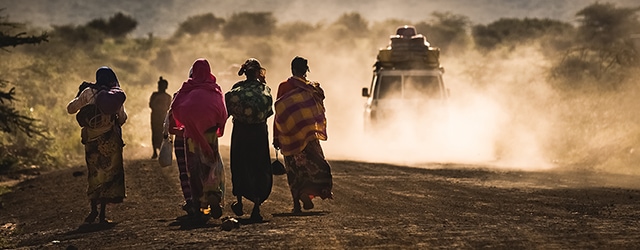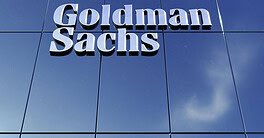The global pandemic is holding back Africa’s essential infrastructure development. Some creative private sector and multilateral solutions promise to ease the crisis.

Even before Covid-19 struck, Africa was already suffering an annual infrastructure investment gap of around $68 billion to $108 billion a year, the African Development Bank estimates. And while the pandemic has so far affected Africa less than any other continent except Australia and Antarctica, the economic blow is raising serious operational and financial challenges. In response, multilateral lenders and development funds are stepping up to the plate.
“Infrastructure projects are still going forward,” says Martijn Proos, director at Ninety One, based in London and Cape Town, who manages the $1 billion Emerging Africa Infrastructure Fund (EAIF) for a multi-donor platform supported by aid agencies in the UK, Sweden, the Netherlands and Switzerland, as well as banks in Europe and Africa. “We have signed five deals worth $150 million this year, with more in the pipeline.”
But the pandemic is having a negative impact on existing projects.
“We have seen a lot of projects slow down dramatically,” says Proos’ colleague Nazmeera Moola, head of South Africa investments at Ninety One. “Some ground to a halt for months, though the position is starting to improve.”
The slower pace is due to Covid-19 lockdowns and other operational restrictions, although most countries have restricted the movement of people rather than goods. As a result, infrastructure projects currently under construction—especially in power and renewable energy—have generally been able to maintain on-site activity.
A more serious threat to planned projects is the tightening of both government and private sector finances as economic activity slows down. The International Monetary Fund in June, forecast an overall economic contraction of 3.2% for Sub-Saharan Africa, with the outlook likely to worsen by the end of the year.
Covid-19 is expected to significantly widen fiscal deficits across the continent, making infrastructure financing harder to come by, says the World Bank in a May report. “The pandemic is expected to dry up long-term finance. As economic activity dips, financial inflows to banks decrease, interbank markets tighten, risk aversion rises, and commercial banks ration their available liquidity to short-term lending. Thus, it is expected that long-term finance from commercial lenders, which was already scarce, will significantly dry up in the coming months and will particularly affect the infrastructure finance market.”
The G20’s debt standstill scheme, calling for a moratorium on bilateral government debt repayments, has allowed many heavily indebted low-income African countries to focus on immediate health care and economic issues. And now that China is belatedly coming on board—although it has opted for a country-by-country approach, and there is still no clarity as to precisely what loans it will categorize as “official” debt as opposed to “commercial” lending—a more coordinated and multilateral approach to debt relief seems to be emerging.
Silver Linings
Consumed with the present crisis, however, most African leaders are unlikely to prioritize new infrastructure.
“Tighter financial conditions make governments more reluctant to commit to long-dated infrastructure projects that typically have a 15 to 20-year time span,” says Moola. “Covid-19 has made time horizons much shorter. And while our infrastructure projects are developed almost entirely by the private sector, their revenue stream is often dependent on off-takes by government or other public sector bodies.”
While some sectors, such as transportation, saw a sharp fall in revenues, others that benefitted from the shift to remote working and E-commerce enjoy a boost.
“Telecoms are proving resilient,” says Proos, pointing to the recent local-currency bond issued by West African telecoms group Sonatel, in which developmental lenders including EAIF acted as anchor investors. The offering was successfully placed, attracting an exceptionally diverse investor base.
“The growing reliance on IT and digital services requires robust supporting infrastructure,” he says, “and especially in Africa, it is important to support that.”
Power generation and distribution have likewise proved resilient. Deemed essential services in most cases by African governments, these enterprises have been allowed to remain operational through lockdowns and other restrictions and therefore able to continue generating revenue. Over the past three years, more than two-thirds of all African infrastructure deals have been in thermal power and renewable projects. With their strong defensive qualities, projects have continued to provide strong revenue streams and returns for private investors even as other sectors stalled.
Looking further ahead, “An initiative that supports the long-term finance market for infrastructure, and provides comfort to commercial lenders, is … needed even more urgently,” says the World Bank report. “Infrastructure investments can be a driver to quicker economic recovery, both in terms of sustaining investment activity and creating jobs in the near term, but also in terms of building an essential foundation for longer term recovery and growth.”
“Developmental lenders nevertheless need to step up and ensure that sufficient liquidity is available for banks to keep underwriting new, sound projects,” says Ninety One’s Proos, especially with commercial lenders in a wary mood.
Multilateral Lenders Step Up
That appears to be what developmental lenders are doing. In June, the World Bank published a Covid-19 crisis response approach paper highlighting green infrastructure and private sector participation in infrastructure as two important approaches for its Rebuilding Better program, aimed at achieving a more inclusive and sustainable recovery in a world transformed by the coronavirus.
In Africa, the World Bank struck two complementary deals with the Trade and Development Bank (TDB), a long-established regional developmental bank active in Eastern and Southern Africa, to provide $415 million in infrastructure support and €359 million (about $424 million) in guarantees for trade finance. By supporting the TDB’s access to financing with longer due dates and lower interest rates than would otherwise be available, the World Bank’s new Regional Infrastructure Finance Facility aims to make financing for selected infrastructure more affordable.
“This is the first regional financing facility in Africa that aims to expand long-term finance to private firms in selected infrastructure, with a focus on the power sector,” says Caroline Cerruti, senior financial specialist at the World Bank. “This regional approach was deliberate, as mobilizing private investment into infrastructure is time and resource intensive and cannot be easily replicated in every country in the region.”
Using the TDB as the linchpin should allow deals to move faster. It’s expected that half and possibly more of the proceeds will fund renewable grid and off-grid energy projects.
The second part of the package is provided by the World Bank’s Multilateral Investment Guarantee Agency (MIGA) and will support the TDB’s trade finance activities. The TDB plays a critical role in addressing Africa’s estimated $120 billion trade finance gap while ensuring the flow of critical commodities and equipment to and between the bank’s member countries, notes Jessica Stiefler, senior underwriter at MIGA.
“MIGA’s guarantee supported the mobilization of long-term private sector financing, specifically through a 10-year €334.4 million syndicated commercial loan facility,” says Stiefler. The credit enhancement permitted the consortium of commercial banks, including Standard Chartered and Citi, to significantly extend the tenor of its financing to the TDB from the typical two to three years to 10, and lower the interest rates below what would have been possible without the guarantee.
“These improved financing terms are expected to enable increased trade finance on-lending as well as greater medium-term lending and lower interest rates for TDB’s clients,” says Stiefler.
Channeling World Bank support through a regional development lender allows for greater speed and enhanced leverage while keeping private investors on board over the long term.
“If developmental funds can provide support to companies to get through this cycle,” says Proos, “it will make investors more comfortable about continuing to invest in Africa.”



